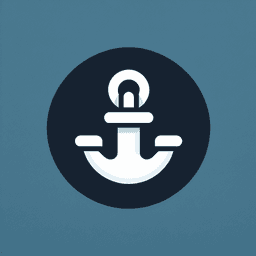
Chock: Definition, Uses, and Examples in Everyday Contexts
January 16, 2025
Chock
A chock is a crucial component in maritime operations, serving as a guide for ropes and cables on a ship. It is typically a metal fitting with a smooth surface, designed to prevent wear and tear on ropes as they pass through. Chocks are strategically placed on the deck or bulwarks of a vessel to ensure that lines are directed safely and efficiently, minimizing friction and potential damage.
There are several types of chocks used in maritime settings, including open chocks, closed chocks, and roller chocks. Each type serves a specific purpose:
- Open Chocks: These are U-shaped fittings that allow for easy placement and removal of lines. They are commonly used for mooring operations.
- Closed Chocks: These have a more enclosed design, providing additional security for lines that need to remain in place for extended periods.
- Roller Chocks: Equipped with rollers, these chocks reduce friction and are ideal for lines that are frequently adjusted or under heavy load.
Chocks play a vital role in ensuring the safety and efficiency of maritime operations, helping to secure vessels during docking, towing, and other maneuvers. Proper maintenance and inspection of chocks are essential to prevent accidents and ensure the longevity of both the chocks and the lines they guide.
Understanding Chocks in Maritime Context
What is a Chock on a Ship?
In maritime terminology, a chock is a stationary, mounted fitting on a ship's deck that guides ropes or cables. Its primary role is to control the direction of these ropes or cables to avoid damage to the ship's structure. Chocks are essential components in mooring and towing operations, ensuring that lines are properly guided and secured.
What is the Difference Between a Chock and a Fairlead?
Mooring chocks and roller fairleads serve different purposes in maritime operations. Mooring chocks are crucial for distributing the forces applied to mooring lines, enhancing stability and safety. In contrast, roller fairleads are designed to guide lines, ropes, or cables smoothly during various operations, such as anchoring and docking, by reducing friction and wear on the lines.
What is the Difference Between a Closed Chock and a Panama Chock?
The main difference between a closed chock and a Panama chock lies in their design and application. Closed chocks are completely enclosed, focusing on stability and safety, making them suitable for environments with minimal wind and wave action. Panama chocks, on the other hand, are designed for use in environments with small tidal changes and are often used in the Panama Canal.
What is the Purpose of a Chock?
The purpose of a chock in maritime applications is to guide and secure mooring lines or cables, preventing them from causing damage to the ship's structure. They are vital for maintaining the stability and safety of the vessel during mooring and towing operations.
Types of Chocks on Ships
There are several types of chocks used on ships, including open chocks, closed chocks, and roller chocks. Open chocks have an open-ended horn, allowing easy access for attaching and detaching mooring lines. Closed chocks provide more security and are used in specific conditions where stability is paramount. Roller chocks are equipped with rollers to facilitate the smooth passage of lines, reducing wear and tear.




